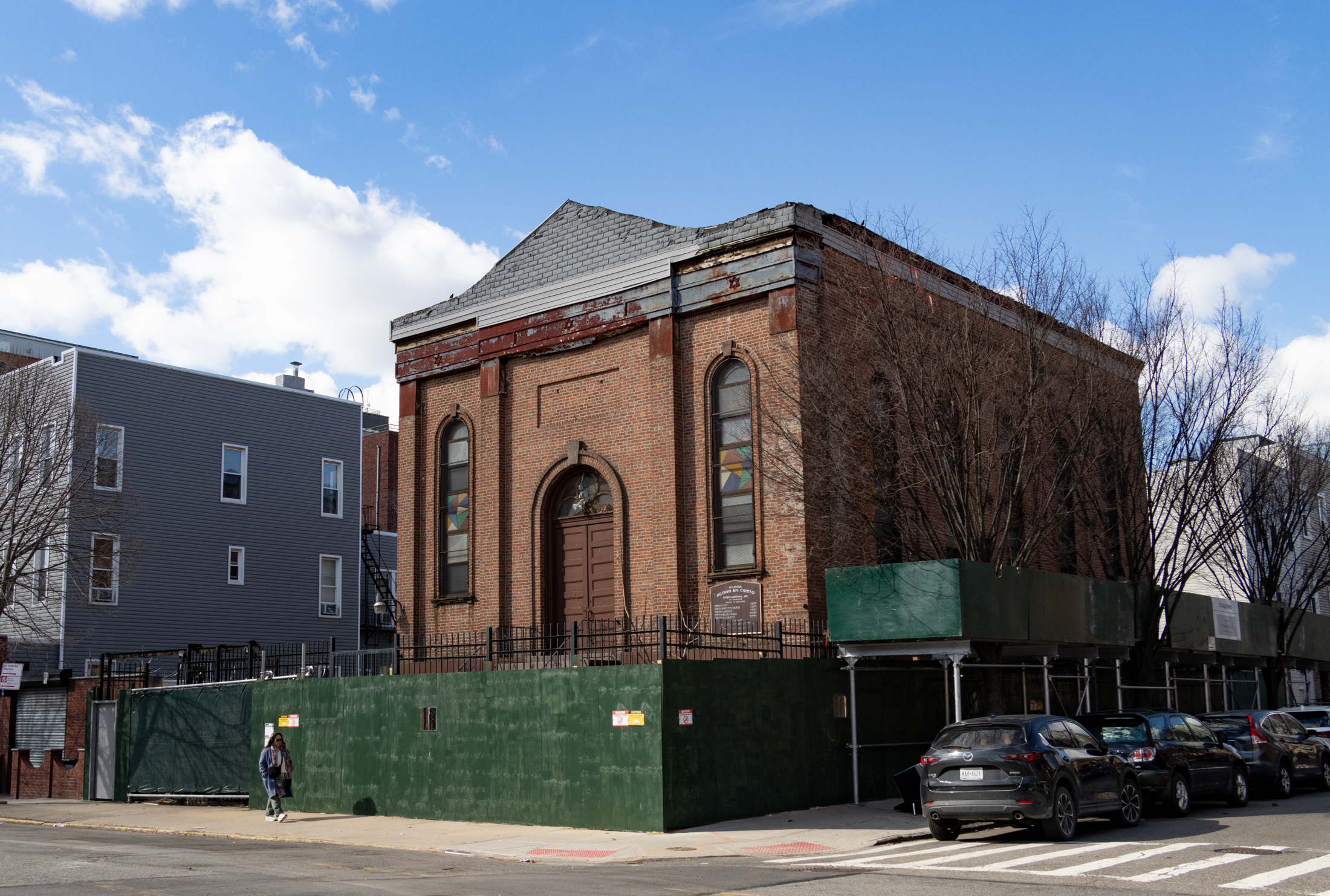Building of the Day: 117-185 South 5th Street
Brooklyn, one building at a time. Name: Former Williamsburg Trust Company, then Magistrate’s Court, now Holy Trinity Church of Ukrainian Autocephalic Orthodox Church in Exile Address: 117-185 South 5th Street Cross Streets: Facing Continental Army Plaza Neighborhood: Williamsburg Year Built: 1906 Architectural Style: Beaux-Arts Architect: Helmle & Huberty, 1915 alterations by Stephen Dodge, Other Work…

Brooklyn, one building at a time.
Name: Former Williamsburg Trust Company, then Magistrate’s Court, now Holy Trinity Church of Ukrainian Autocephalic Orthodox Church in Exile
Address: 117-185 South 5th Street
Cross Streets: Facing Continental Army Plaza
Neighborhood: Williamsburg
Year Built: 1906
Architectural Style: Beaux-Arts
Architect: Helmle & Huberty, 1915 alterations by Stephen Dodge,
Other Work by Architect: Greenpoint Savings Bank, St. Barbara’s RC Church, Bushwick; St. Gregory the Great RC Church, Crown Heights North; Bossert Hotel, Brooklyn Heights, Boathouse, Prospect Park
Landmarked: No, shockingly
The story: Some of the Beaux-Arts buildings inspired by the City Beautiful Movement are absolute architectural gems, others behemoths of architectural shock and awe. This is most pleasantly the former. It’s a perfect Neo-Classical building, with perfect proportions. The columns are the right height and width, the dome, just perfection, and the Classical dimensions of the pediments and the other elements that make up this former bank are just wonderful. Frank Helmle outdid himself on this one, and I like it much better than his later Greenpoint Savings Bank, which very is similar to this one, but less perfectly proportioned. He clad the entire building in glazed white terra-cotta, similar to the Prospect Park Boat House, leaving only the columns in marble. The columns and entryway of the building are also reminiscent of his colonnade on St. Gregory the Great’s church in Crown Heights North.
Ok, enough of perfection, because the story of the bank itself is rife with allegations of fraud, mismanagement and white collar crime at its best. The bank was founded by the Jenkins family, one of turn of the 20th century’s most successful Brooklyn banking dynasties. Their tale will most definitely be told in upcoming Walkabouts. The Jenkins’ were father and sons who controlled an impressive number of banks, trusts and brokerage concerns. Pater John G. Jenkins, Senior, founded the Williamsburg Trust Company in 1899, with himself as president. He was later succeeded by his son Frank.
The plot of land purchased for the bank was in the heart of Williamsburg’s financial and business district, on the edge of a large expanse of village square called the Continental Army Plaza, soon to be part of the larger Williamsburg Bridge Plaza. The Bridge was finished in 1903, opening up the Lower East Side to Brooklyn, bringing thousands of immigrants, as well as commerce and business to Williamsburg. There were several major banks in the area, all near the bridge, and all of them significant as community and financial institutions, as well as architecturally, and this one was in good company. Helmle, in fact, would go on to design both of the additions to George Post’s magnificent 1875 Williamsburg Savings Bank building.
The Jenkins family’s legal problems resulted in the closing of the Williamsburg Trust only eight years later. The bank building then became a branch of the Magistrate’s Court for the 5th District, in 1915. Architect Stephen W. Dodge was in charge of transforming the interior. Only the new name changed the exterior of the building. One of the great features of this building is the fact that is completely stands alone, something very few banks had, or even courthouses, as space is always at a premium.
The court remained here for many years, until the court system changed and centralized, and the neighborhood magistrate’s courts all closed, in the early 1960s. In 1961, the city sold the building to the Ukrainian Orthodox Church. Their alterations for the building were approved that year. The exterior again remained basically the same, with interior alterations the only thing necessary. It was an excellent case of adaptive re-use, on both occasions, actually. An elegant and classical building like this fits in perfectly with the needs and aesthetic preferences of an Eastern Orthodox Church. Today, it is the spiritual home of the Holy Trinity Church of Ukrainian Autocephalic Orthodox Church in Exile. From bank, to courthouse, to church; all kinds of worship there, in interesting progression, in a great building. Helmle and Huberty did their job well. GMAP
(Photo: Wallyg on Flickr)













Interesting article, thanks. You can’t help but wonder what is next for this building. How is the congregation doing? Are there any Ukrainians left in Williamsburg at this point? In fifteen years in the neighborhood I don’t think I’ve ever encountered any.
Here’s a really good image of it – zoom in. Notice the sign to the right saying that an additional building will be built. It’s an apartment building now – not sure if it was ever offices or not – or if something was built and then torn down:
http://www.shorpy.com/node/9164?size=_original#caption
Amazing, thanks.